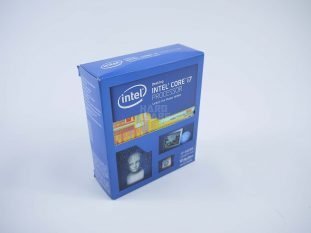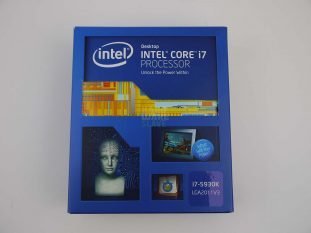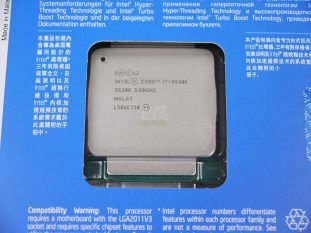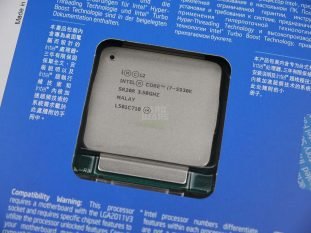Introduction
Skylake is here and it’s time for Intel’s Moore’s Law evolution, or is it? Last year Intel released their high end desktop CPU’s in the shape of the Intel Core™ i7-5820K, i7-5930K and the i7-5960X Extreme Edition. They haven’t been replaced and are still very strong, so should you overlook the Haswell-E?
It is risky when buying any high end component, notwithstanding the i7-5960X Extreme Edition is still an astonishing £799.99 and the financial risk, if your CPU is not cutting the mustard, you may as well down grade the rest of your rig. Your CPU powers the rest of the components, it needs to reflect the intention of the design, so don’t scrimp.
They have come down in price a little and open up a world of bandwidth munching high end motherboards. If you are not going to upgrade every year, then you maybe the type to save and upgrade to the top end kit and run it for three or four years, the Haswell-E could be the one for you.
Skylake also has DDR4 so Haswell-E no longer has the monopoly on it. Intel have got a slightly confusing naming convention now, with the release of the i7-6700K, I wonder how the i7-5960X feels about that!
You are not going to see the Broadwell-E until Q1 2016, and with naming conventions such as i7-6700K and the Intel 100 Series chipset, it also may get a little confusing for the consumer when trying to get the best for their cash, and the CPU they want.
So what do you do, go for the big bucks or upgrade year on year? One option is to return to Intel’s flagship desktop models, and we have the Intel i7-5820K and i7-5930K Processors for review today.
We stuck them in our test rig and ran them through some tests, real work and synthetic. Nothing too fancy, just results you should be able to get your teeth into.
Specifications
| i7-5820K | i7-5930K | i7-5960X | |
|---|---|---|---|
| Launch Date | Q3'14 | Q3'14 | Q3'14 |
| Cache | 15 MB Intel® Smart Cache | 15 MB Intel® Smart Cache | 20 MB Intel® Smart Cache |
| Instruction Set | 64-bit | 64-bit | 64-bit |
| Instruction Set Extensions | SSE4.2, AVX 2.0, AES | SSE4.2, AVX 2.0, AES | SSE4.2, AVX 2.0, AES |
| Lithography | 22 nm | 22 nm | 22 nm |
| # of Cores | 6 | 6 | 8 |
| # of Threads | 12 | 12 | 16 |
| Processor Base Frequency | 3.3 GHz | 3.5 GHz | 3 GHz |
| Max Turbo Frequency | 3.6 GHz | 3.7 GHz | 3.5 GHz |
| TDP | 140 W | 140 W | 140 W |
| Max Memory Size | 64 GB | 64 GB | 64 GB |
| Memory Types | DDR4 1333/1600/2133 | DDR4 1333/1600/2133 | DDR4 1333/1600/2133 |
| Max # of Memory Channels | 4 | 4 | 4 |
| Max Memory Bandwidth | 68 GB/s | 68 GB/s | 68 GB/s |
| ECC Memory Supported | No | No | No |
| Processor Graphics | None | None | None |
| PCI Express Revision | 3.0 | 3.0 | 3.0 |
| Max # of PCI Express Lanes | 28 | 40 | 40 |
| Sockets Supported | LGA2011-v3 | LGA2011-v3 | LGA2011-v3 |
Product Shots
There is not much to say about CPUs and packaging, though Intel don’t include a stock cooler for this range, possibly assuming that if you are buying this, you have the cash to spend on an after market cooler? Still, they are lovely looking!
Intel i7-5820K and i7-5930K Processor Review
Package - 8.5
Performance - 9.5
Price - 9
Consumer Experience - 9.5
9.1
As we said at the beginning, Skylake is now here and the time is right to think about upgrading.You need to spare a thought for these power houses and if you are going to spend your money, which one? This is a simple one, unless you are going to use more than one graphics card, you need to buy the i7-5820K. As you can see from the test results, it's only a very small margin away from the i7-5930K in single card configurations.




